Download your own copy of;
This table contains links to past papers from the SQA Advanced Higher Physics exam. These papers and solutions are reproduced to support SQA qualifications on a non-commercial basis according to SQA conditions of use.
CfE Advanced Higher
for teachers:
SQA skills tagging 2016-2025
pdf
xlsx
SQA Specimen Paper (including answers) specimen paper
2025 question paper solutions
2024 question paper solutions
2023 question paper solutions
2022 question paper solutions
2021 question paper solutions
2019 question paper solutions
2018 question paper solutions
2017 question paper solutions
2016 question paper solutions
SQA Exemplar Paper (including answers) exemplar paper
SQA Specimen Paper (including answers) specimen paper
Revised Advanced Higher
2015 paper solutions
2014 paper solutions
2013 paper solutions
Traditional Advanced Higher
2015 paper solutions
2014 paper solutions
2013 paper solutions
2012 paper solutions
2011 paper solutions
2010 paper solutions
2009 paper solutions
2008 paper solutions
2007 paper solutions
2006 paper solutions
2005 paper solutions
2004 paper solutions
2003 paper solutions
2002 paper solutions
2001 paper solutions
Uncertainties
Uncertainty notes and questions
Solutions to uncertainty questions
I wrote a series of posts with pdf booklets about uncertainty
Information sheet on using Excel to process uncertainties and create graphs with error bars and a line of best fit.
Rotational Motion and Astrophysics
Rotational motion & Gravitation notes (thanks Mr Orr!)
More rotational motion and gravitation notes
Angular Momentum
What is the difference betweeen G and g?
Here is a clip from the BBC’s Beautiful Equations programme, where Newton’s law of universal gravitation is discussed.
Newton’s Gravitational Force Equation from mr mackenzie on Vimeo.
Without Tycho Brahe’s detailed observations of the night sky, we would not have had Kepler’s Laws. Here is a bit of background on Tycho.
Here, Carl Sagan introduces Kepler’s laws of planetary motion.
If you watch this video on Youtube, you will see a huge number of alternative videos on Kepler’s work in the right sidebar.
Kepler’s 1st law:
Click on the picture below to try the simulator.
Kepler’s 2nd law:
Another simulation by the same guy.
General Relativity
Why Einstein is such a big deal from Fusion Media Network on Vimeo.
General relativity explained in under 3 minutes from Fusion Media Network on Vimeo.
Science Museum – Einstein’s Cosmos from ORDER Productions on Vimeo.
#Einstein100 – General Relativity from Eoin Duffy on Vimeo.
The Eclipse that made Einstein Famous from Massive Science on Vimeo.
Newtonian mechanics was unable to give an accurate prediction for the orbit of Mercury. It turns out Mercury is just a bit too close to the Sun for classical physics to work well and this provides evidence in support of general relativity.
In this video, astronomers and theoretical physicists explain their ideas about black holes and discuss observations of potential black holes. There are some nice animations to explain general relativity and, in the last section, those calculations of super massive black hole mass are using Kepler’s 3rd law.
Black Holes and General Relativity from mr mackenzie on Vimeo.
Black holes and the Schwarzchild radius
Stellar Physics
Our Sun is a typical yellow star, so its emission would be represented by the middle star in this image.
image courtesy of kstars, kde.org – colour is exaggerated
The colour of a star also tells us something about the expected behaviour of a star, it’s lifetime, and destiny. This is achieved by plotting stars on a Hertzsprung-Russell diagram. More about HR diagrams here.
This video clip looks at how the stars are arranged on the HR diagram.
Hertzsprung Russell diagram from mr mackenzie on Vimeo.
While some HR diagrams use temperature along the x-axis, others use star classification. You can learn more about star classification in this Sixty Symbols video.
Now test your understanding of the HR diagram.
Stars are born in the clouds of dust and hydrogen gas in space. This video shows how a protostar can form and go on to become a main sequence star.
Once fusion is initiated in the star’s core, the hydrogen in the core is slowly converted into helium. While Hans Bethe solved the problem of pp chain fusion process in stars (see below), it was Hoyle who identified the pathway for producing heavier nuclei.
Hoyle – life cycle of stars and fusion from mr mackenzie on Vimeo.
When there is no hydrogen left in a star’s core, the star becomes a red giant and leaves the main sequence.
Red giants appear as one group on the HR diagram. These stars are much larger than our Sun, click on the image below and zoom in to compare sizes.
scale of our Sun and several red giant stars: image from Osservatorio Astronomico Di Cagliari
Here is a video clip to explain internal processes in red giants.
red giants from mr mackenzie on Vimeo.
Once a red giant has run out of fuel for nuclear fusion, the outer layer is shed as a planetary nebula, leaving a small hot core behind. The core is very hot but has low luminosity due to its small surface area. We call this a white dwarf star.
White dwarf stars appear as a cluster in the bottom left of the Hertzsprung-Russell diagram. This video discusses the mechanism that prevents a white dwarf star from collapsing.
white dwarfs from mr mackenzie on Vimeo.
The precise lifecycle of a star depends on its mass. The route described above relates to an average star such as our Sun. If the star is heavier, it follows a different path as shown in the diagram below.
So what is a supernova? This video from Sixty Symbols explains…
And neutron stars…
Fusion in stars
Where does the Sun get its energy? A straightforward question but physicists struggled to find an answer until the 1920s, when Eddington suggested that nuclear fusion might be responsible.
A star is drawing on some vast reservoir of energy by means unknown to us. This reservoir can scarcely be other than the subatomic energy which, it is known exists abundantly in all matter; we sometimes dream that man will one day learn how to release it and use it for his service. The store is well nigh inexhaustible, if only it could be tapped. There is sufficient in the Sun to maintain its output of heat for 15 billion years. — Sir Arthur Stanley Eddington
The German/American astrophysicist Hans Bethe developed the solar fusion model we still use today. There are different branches to the model. Each has its own slightly different route to create helium from protons, releasing different quantities of energy in the process. Bethe won the 1967 Nobel Prize for Physics; here is a summary of his work and a copy of the Nobel Prize award ceremony speech.
Hans Bethe’s security pass for the Los Alamos facility. image: wikipedia
Bethe worked on the Manhatten Project at Los Alamos during World War II. He later campaigned for an end to nuclear weapons alongside Albert Einstein.
The fusion process is our Sun is called proton-proton fusion and the steps you need to know are outlined in the diagram below. Click on the diagram for a larger version.
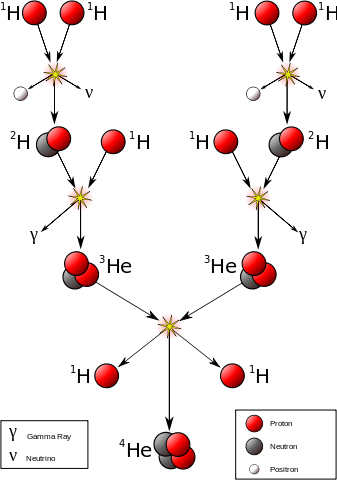 image: wikipedia
image: wikipedia
This video shows the full pp chain process.
This video from Sixty Symbols is about solar neutrinos. The first half has a nice series of animations about the full pp chain fusion process.
Quanta & Waves
This stuff can hurt your head. Take the de Broglie equation, who would want to find the wavelength of an electron?
Black body radiation
Planck’s constant
Particles from Space
Victor Hess discovered cosmic rays during a hot air balloon flight
The charged particles in cosmic rays interact with the Earth’s magnetic field to produce the Aurora Borealis. More information here and here.
Here is a video introduction to Simple Harmonic Motion. Some of the maths used during the video, for example the addition of the + \phi term in the brackets, is not required for the AH course.
IBPH Episode #7 – Simple Harmonic Motion (Part 1) from Horatiu Pop on Vimeo.
Here is a video on polarisation from the people at sixty symbols.
Here is a video showing wave behaviour. The superposition (addition) of two waves travelling in opposite directions is particularly clear.
Electricity
We use permanent magnets and electromagnets in class, but to create a really strong magnetic field requires a superconducting magnet like the one in this video.
Disclaimer: I used to work for the company that built that magnet.
Inductors.
MAKE presents: The Inductor from make magazine on Vimeo.
This article looks at different types of commercially available inductors.
Here are some examples of electromagnetic induction:
Applications of electromagnetic induction from Horatiu Pop on Vimeo.
This clip from Sixty Symbols is really more about transformers than inductors but the explanation is good and you get to see the back-emf lighting in action.
Mr Smith has a video where he works through a past paper question on inductors in ac and dc circuits.
RC Circuits
Watch Mr Smith work through a past paper question on capacitors and time constants.

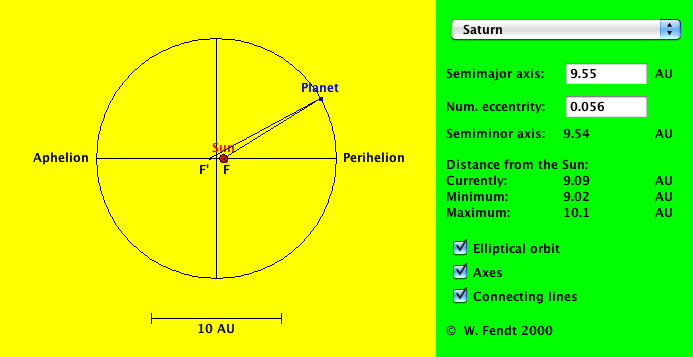
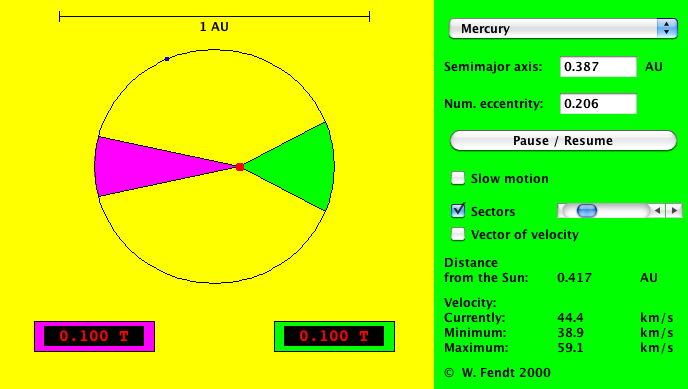
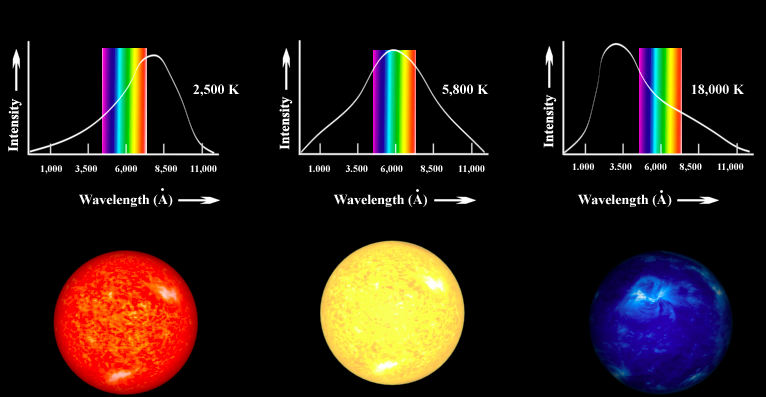
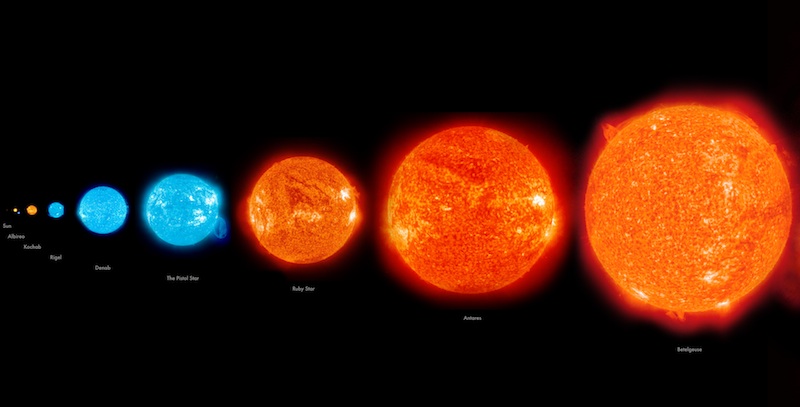
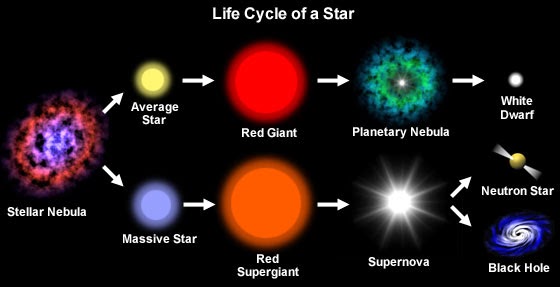

thanks for these
Not to argue with Mr Donn’s marking instructions (it has been pointed out to me that the laws of physics do in fact change depending on what he writes as his answer), but SQA advanced higher physics answers (and many other subject answers) go as far back as 2003 on their website, even thought the past papers don’t:
http://www.sqa.org.uk/sqa/controller?p_service=Content.show&p_applic=CCC&pContentID=3212
James,
you’re right. I forgot that the marking solutions go back for more years than the questions papers. Feel free to use the SQA versions, but they are not perfect either, e.g. 2005 Q6(e).
Posting this reply from CERN btw 😉
Good luck to you all on Friday.
the whole unit 1 summary is not working for me?
Thanks, Alan.
I upgraded the site software over the summer and all the AH Physics links must have broken. They should be working now.
The SHM notes lifesafers! thanks.
By the way the waves note links to electrical phenomena.
Do you cover newton’s universal law of gravitation?
I’ve fixed that link, thanks for letting me know about it.
I don’t have anything on gravitation but I am sure Scholar does.
thanks to you i got an A in advanced higher physics
Where’s the past papers?
Please use the search function or read this.
Good luck today!
Hi,
I am currently doing Adv. H. Physics at Peebles High School and for our investigations we had the opportunity to go to Herriot-Watt University to use their equipment – I used their spectrometer. I noted the supplier (Griffin & George Ltd.) but as far as I can tell, they have not been an active business since 1999, so I can’t contact them about the uncertainties in their equipment.
However, you actually have a picture on this site of a spectrometer IDENTICAL to the one I used, so I would massively appreciate if you knew any information on the spectrometer’s reading and calibration uncertainties, or how I could go about finding them. I didn’t use the smallest minutes scale, but I just about managed to use the larger one, though it was very much a matter of personal judgement!
Thanks for any help/guidance you can give.
The angle measurement varies on these instruments, I have one with a vernier scale to measure minutes and another where the vernier scale measures in steps of 0.1 degrees. I have no information on the calibration uncertainty, you may wish to contact the people at Heriot-Watt as they could still have the paperwork that came with the spectrometer. For scale reading, the analogue scale you describe would produce +/- half the smallest division. This means you need to know the steps marked on the “smallest minutes scale”. These scales are difficult to read but the task is easier in good lighting (don’t keep the light off when reading the scale) and I sometimes set up a 12V bulb for extra light to check the Vernier scale.
I recommend you try working through this Vernier tutorial from the University of Toronto. The Java applet at the bottom of the page will give you some prctice at reading the a Vernier scale. NOt for a spectrometer but it’sthe same principle.
Do you have any pastpapers before 2000
Sorry, that was the first year of Advanced Highers.
Hello sir, I am having difficulty with a question and was wondering (if time permits) you could help me?
I was wondering how to calculate the period of any particle in a uniform magnetic field undergoing helical motion?
I am not sure how to do this.
Thank you!
Ok, the centripetal force acting on the particle is provided by the magnetic force that acts on the component of velocity perpendicular to the magnetic field lines. Equate these two forces and rearrange to get an expression for period T. See the attached image.
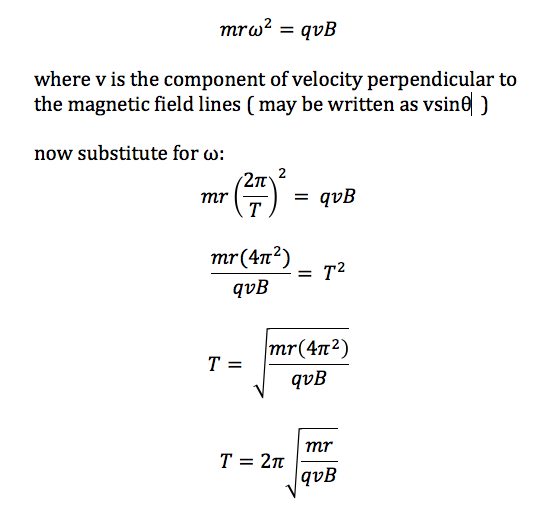
I see! Thank you very much.
Give up! I couldn’t begin to compete with this site. I’ll just direct my pupils here!
scisyhPsrM ;0)